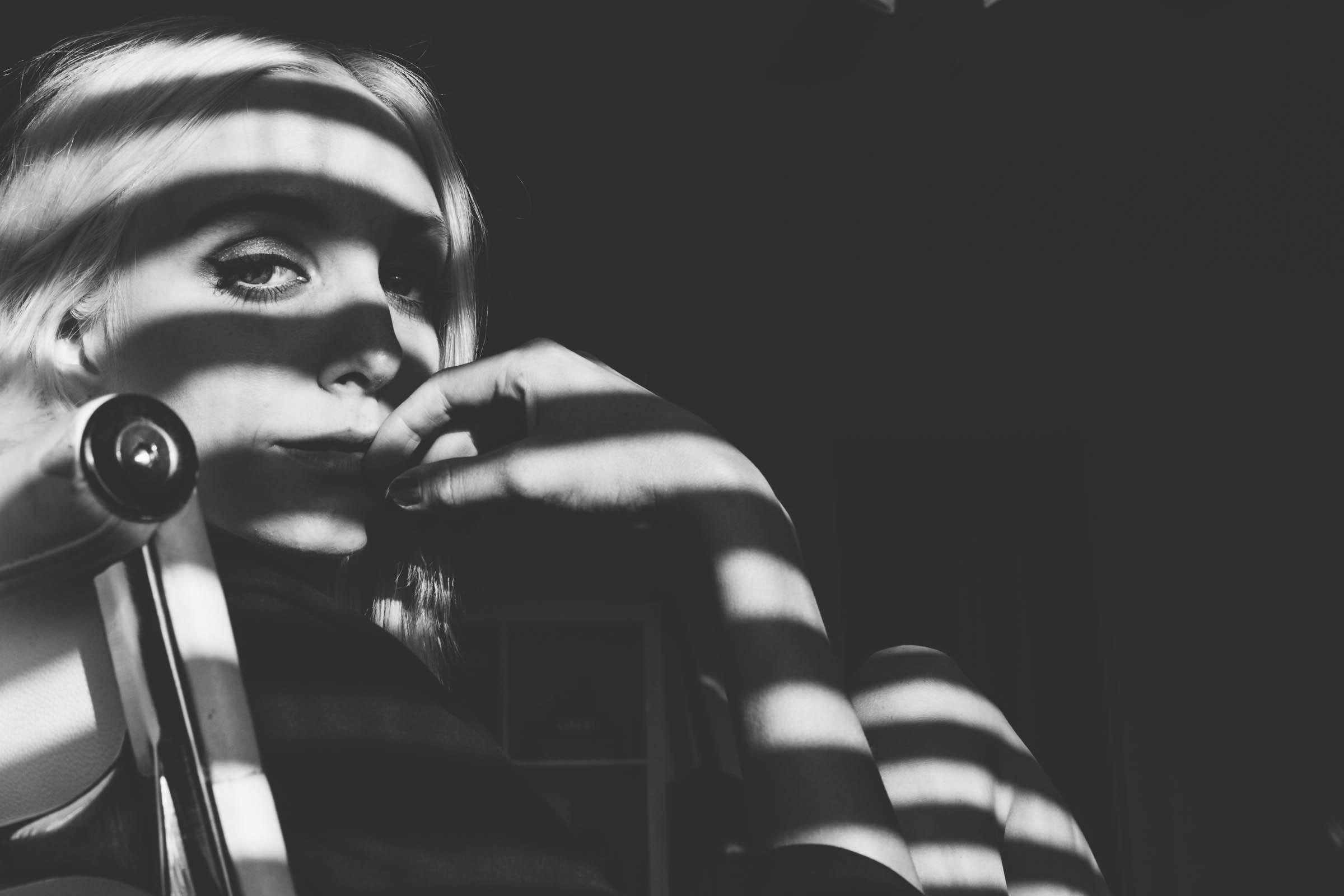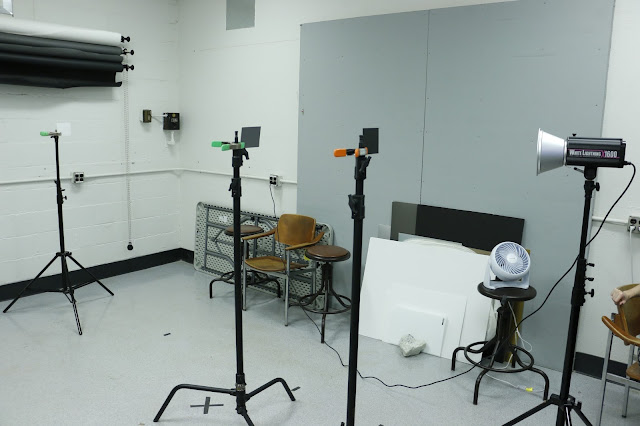Grids and Snoots
Each person will post their own images and analysis.
Research film noir portraits. Choose one photograph to replicate. Use AT LEAST two grids or one grid and one snoot.
Spend some time editing your image in Lightroom (convert it to black and white and adjust the lighting using all of the global and local adjustments available to you in the develop module.)
Post a description of your setup (drawing/diagram even better) and discuss how the grids helped you achieve the lighting in your portrait.
While researching film noir portraits I came across many, but wanted to try and tackle the film noir portrait that included shadow blinds in the photo. I did my best to try and find a portrait that I felt I could replicate. In the photo above, it appears that light is coming from one source and it may even be natural light streaming through a window with shades.
To try and produce blinds shadows on the subject/scene, I figured I would need to build something. Below is my creation.
 |
| Cardboard grid with black foil and tape. |
|
I cut out slats in cardboard to replicate blinds and covered it in foil and black tape. You could attach this to tripod or have someone hold the grid to have the light fall across the eyes.
 |
f/3.5, 1/60, ISO 100 1600 Key light - 10' 100% 20 grid 1600 Fill light - 5' -5f quarter power |
I chose a 20 grid for the key light hoping for a more intense and
concentrated light on the subject and a 40 grid in the fill for a more
diffused look. Initially, the strobe continually blew out the shadow
lines. With this happening we did change the intensity of the key
light a few times and then eventually moved the strobe far away from the
subject (10') at full power. With the grid close to the subjects face
we began to notice lines showing up, however they were not to the
thickness or shadow weight I was hoping for. Because the assignment
called for two grids or a grid and a snoot, I did add the fill light to
the right which is not evident in the professional photo above. We began to set up key and fill lights at first, but recognized
it is best sometimes to start with one light and build from there. I
would need to experiment further to really replicate the shadow seen in
the professional photo above.
 |
f/3.5, 1/60, ISO 100 1600 Key light - 10' 100% 20 grid 1600 Fill light - 5' -5f quarter power |
 |
Light set up. Key to left, fill to right. Holding grid and photographer shoots subject to the right of grid |













































